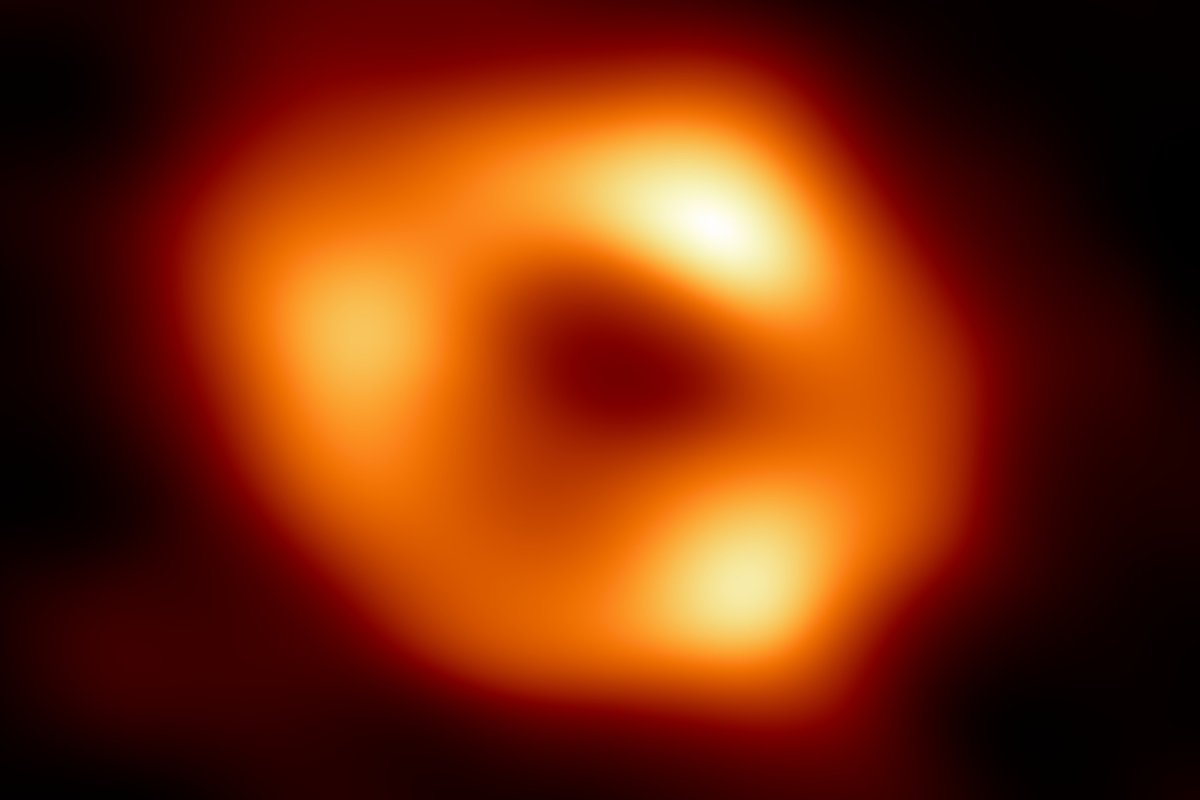A trio of Japanese astronomers has raised concerns about the accuracy of the first-ever image depicting the supermassive black hole at the center of our galaxy. This revelation, if verified, suggests that the image released in 2022 might not accurately represent the true appearance of Sagittarius A*, the black hole located 26,000 light-years from Earth. The findings originate from researchers at the National Astronomical Observatory of Japan (NAOJ) and were detailed in a paper published in the Monthly Notices of the Royal Astronomical Society.
The original image, created by the Event Horizon Telescope Collaboration (EHTC), involved observations from a global network of eight ground-based radio telescopes in 2017. It showcased a dark central region, representing the black hole's shadow, encircled by a bright ring of light, also known as the accretion disk, formed by superheated gas accelerated by intense gravitational forces.
While many scientists have validated the EHTC image, the recent analysis led by Makoto Miyoshi proposes that certain aspects of the image may be artifacts from the imaging process itself. According to Miyoshi, their study indicates that the image might be elongated in the east-west direction, with differing brightness levels between the eastern and western halves. This raises questions about whether the ring truly reflects the black hole's structure or if it resulted from errors in the imaging analysis.

Despite the validation from numerous researchers, the findings from the NAOJ team suggest a possible reevaluation of the black hole's appearance. They posit that the ring observed in the original image might stem from analytical errors rather than a true astronomical structure. Newsweek reached out to the EHTC for a response, and they indicated that they are preparing a collective answer to the new findings.
Event Horizon Telescope Director Huib Jan van Langevelde referred Newsweek to an earlier response regarding similar concerns raised by the same trio of researchers about another EHTC image. The ongoing debate about the nature of these images highlights the complexities involved in capturing such distant astronomical phenomena.
This new perspective on the image of Sagittarius A* invites further exploration and discussion within the astrophysics community, emphasizing the importance of rigorous analysis in scientific research.
Understanding Black Holes and Their Significance
Black holes are fascinating cosmic entities formed when massive stars undergo gravitational collapse. The immense gravitational pull of black holes is so powerful that nothing, not even light, can escape from them, leading to their mysterious nature. At the core of every black hole lies a singularity—the point where density and gravity become infinite, causing the laws of physics to break down.
Surrounding the singularity is the event horizon, a boundary beyond which no information can escape. This makes black holes particularly intriguing for astronomers and physicists alike, as they challenge our understanding of space and time. The study of black holes can unveil secrets about the universe, providing insights into the nature of gravity, the behavior of matter under extreme conditions, and the evolution of galaxies.
As we continue to observe and analyze these enigmatic objects, the findings from researchers like those at the NAOJ remind us of the importance of questioning established knowledge and the need for continuous scientific inquiry.
Key Takeaways from the Recent Findings
What You Will Learn
- The accuracy of the first-ever image of Sagittarius A* has been challenged by Japanese astronomers.
- The original image may contain artifacts rather than accurately depicting the black hole's structure.
- The significance of rigorous data analysis in astrophysics is emphasized by the new findings.
- Understanding black holes is crucial for advancing our knowledge of the universe and the fundamental laws of physics.
The discussions surrounding the image of Sagittarius A* not only highlight the complexities of astrophysical research but also inspire curiosity about the universe we inhabit. As new data emerges, our understanding of these cosmic giants continues to evolve, paving the way for future discoveries.
You Might Also Like
Kamala Harris Prepares For First Fox News Interview As Democratic Presidential NomineeSpeaker Of The House Mike Johnson's 'Little Secret' With Donald Trump Revealed
Shocking Turnover Rates At JD Vance's AppHarvest: A Closer Look
The Impact Of Toby Keith’s Legacy: A Reflection On His Life And Influence
Discovering Paradox Pokemon In Pokemon Scarlet And Violet
Article Recommendations
- Joe Alwyn Posts Brooding Photo After Taylor Swift Cozies Travis Kelce 1950189
- New Jersey Map Population Shifting Crowded 1975080
- Rainbow Bridge Closure What We Know 1846195
- Mel Gibson Anti Semitism Racism Accusations 1512808
- Jonah Hill Sarah Brady Text Messages Full Transcript 1812193
- Donald Trump Calls Jd Vance Town Hall Michigan 1974861
- What Pamela Anderson Has Said About Sex Tape Tommy Lee Pamela Love Story Netflix 1776828
- Tiffany Gomas Not Real Tiktok Video Ultra Right Beer Photo 1891657
- Sweatpea Owner Speaks About Dog Honored During 2024 Puppy Bowl 1869279
- Little Rascals Netflix Where Are They Now 2021 1582862

